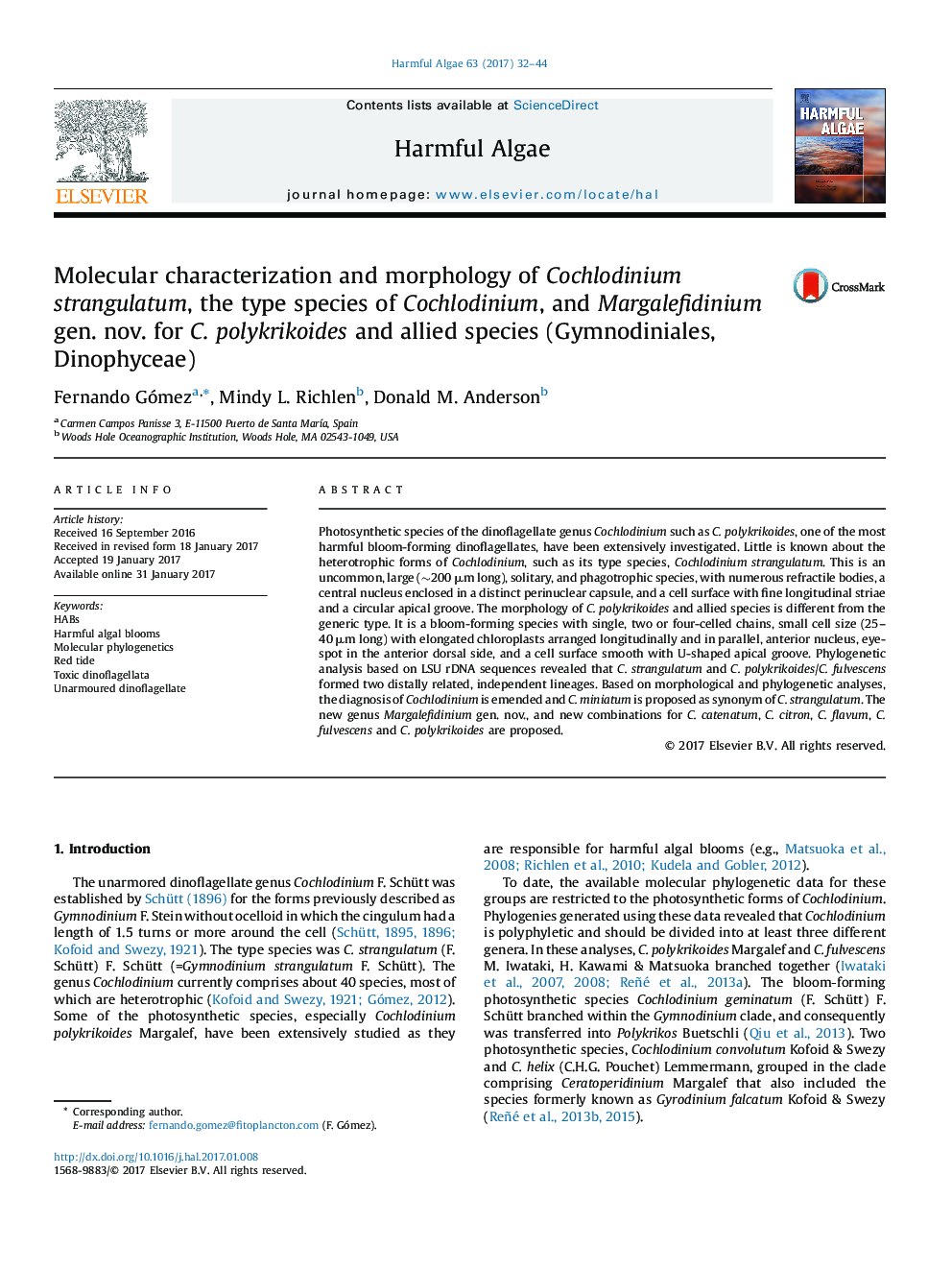| Article ID | Journal | Published Year | Pages | File Type |
|---|---|---|---|---|
| 5765796 | Harmful Algae | 2017 | 13 Pages |
â¢The type species of Cochlodinium, C. strangulatum, is widespread, but was mistaken for large cells of Gyrodinium.â¢First molecular data of a Cochlodinium heterotrophic species, the generic type Cochlodinium strangulatum.â¢The morphology and molecular phylogeny of Cochlodinium polykrikoides is distantly related to the generic type.â¢New genus, Margalefidinium gen. nov., and combinations for Cochlodinium polykrikoides and allied species.
Photosynthetic species of the dinoflagellate genus Cochlodinium such as C. polykrikoides, one of the most harmful bloom-forming dinoflagellates, have been extensively investigated. Little is known about the heterotrophic forms of Cochlodinium, such as its type species, Cochlodinium strangulatum. This is an uncommon, large (â¼200 μm long), solitary, and phagotrophic species, with numerous refractile bodies, a central nucleus enclosed in a distinct perinuclear capsule, and a cell surface with fine longitudinal striae and a circular apical groove. The morphology of C. polykrikoides and allied species is different from the generic type. It is a bloom-forming species with single, two or four-celled chains, small cell size (25-40 μm long) with elongated chloroplasts arranged longitudinally and in parallel, anterior nucleus, eye-spot in the anterior dorsal side, and a cell surface smooth with U-shaped apical groove. Phylogenetic analysis based on LSU rDNA sequences revealed that C. strangulatum and C. polykrikoides/C. fulvescens formed two distally related, independent lineages. Based on morphological and phylogenetic analyses, the diagnosis of Cochlodinium is emended and C. miniatum is proposed as synonym of C. strangulatum. The new genus Margalefidinium gen. nov., and new combinations for C. catenatum, C. citron, C. flavum, C. fulvescens and C. polykrikoides are proposed.
Graphical abstractDownload high-res image (552KB)Download full-size image
